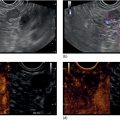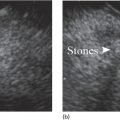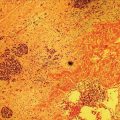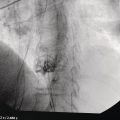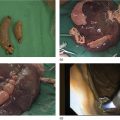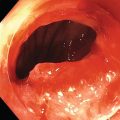Raymond S. Tang1 and Thomas J. Savides2 1 Institute of Digestive Disease, The Chinese University of Hong Kong and Prince of Wales Hospital, Shatin, New Territories, Hong Kong, China 2 Division of Gastroenterology, University of California San Diego, La Jolla, CA, USA Endoanal ultrasound is a simple and reliable tool in the evaluation of benign anorectal diseases such as fecal incontinence and anal fistula. Fecal incontinence can cause significant distress in otherwise functional individuals. Large community‐based studies have reported a prevalence of fecal incontinence ranging from 7–15% in women living in the community to 50–70% in nursing home residents. The incidence of fecal incontinence is expected to increase in the aging population. Gross incontinence occurs in 0.7% of the US population and is almost twice as common in women as in men. Obstetrical trauma is one of the most common causes of anal sphincter injury leading to fecal incontinence. Fecal incontinence is present in 20% of postpartum women with an anal sphincter defect. Overt anal sphincter damage due to a third‐degree or fourth‐degree tear occurs in 0.7% of women undergoing vaginal delivery with posterolateral episiotomy. Maintenance of fecal continence requires the following: normal functioning of the anal sphincters and puborectalis muscle, intact anorectal sensation, intact cognitive function, and normal stool consistency. Etiologies of fecal incontinence include (i) weakness of internal or external anal sphincter (e.g. obstetrical trauma from vaginal delivery and episiotomy, prior anorectal surgery, fistula, pudendal neuropathy, diabetes); (ii) weakness of puborectalis muscle (e.g. spinal cord lesion, peripheral neuropathy); (iii) decreased perception of rectal sensation (e.g. diabetes, multiple sclerosis, dementia); (iv) reduced storage capacity (e.g. rectal ischemia, radiation proctitis, inflammatory bowel disease); and (v) overflow state with intact sphincter function (e.g. severe diarrhea, fecal impaction). Assessment of fecal incontinence begins with a careful history regarding the nature of incontinence, prior history of anorectal diseases and surgeries, obstetrical history in female patients, neuropathies, and neurologic diseases. Physical examination should include perianal inspection at rest and upon straining as if to defecate, digital rectal examination to check for structural lesion, anal sphincter tone at rest and upon squeezing, and ano‐perineal sensation. Patients with internal anal sphincter defects have decreased resting sphincter tone, while patients with external anal sphincter defects have decreased voluntary anal canal squeeze. Further testing of anal sphincter for structural defect or dysfunction may be pursued when etiology of fecal incontinence is uncertain. Flexible sigmoidoscopy or colonoscopy can be used to exclude mucosal inflammation or mass. Pelvic magnetic resonance imaging (MRI) provides a noninvasive way to investigate the structural integrity of the anorectum. Endoanal ultrasound is further discussed in the following section. Anorectal manometry allows measurement of resting and squeeze anal sphincter pressure. An intrarectal balloon can be used to assess rectal sensation. Decrease of resting or squeeze sphincter pressure with normal sensory testing suggests mechanical sphincter defect. Pudendal nerve terminal latency (PNTL) testing measures the time to induce external anal sphincter contraction after stimulation of pudendal nerve. About 16% of postpartum women would have a conduction delay. The use of electromyography for anal sphincter mapping, usually poorly tolerated by patients, has diminished as endoanal ultrasound becomes available. Endoanal ultrasound has emerged as a reliable and well‐tolerated investigation for defects in internal anal sphincter (IAS) and external anal sphincter (EAS). The accuracy of endoanal ultrasound in detecting anal sphincter defects prior to sphincter repair ranges from 89 to 100% in surgical series. While both endoanal ultrasound and pelvic MRI can be used for evaluation of anal sphincter injury, endoanal ultrasound is often the first choice for anal sphincter imaging due to its wide availability and clearer visualization of IAS. On the other hand, pelvic MRI is more helpful in identifying EAS atrophy and a patulous anal canal, which are suggestive of pathologies beyond anal sphincter injury alone. Endoanal ultrasound can be performed with a rigid radial ultrasound probe or a radial echoendoscope. Figure 16.1 shows a schematic diagram of the anal canal complex. On ultrasound, two rings of tissue can be seen in the normal anal canal (Figures 16.2 and 16.3). The inner hypoechoic ring of tissue corresponds to the IAS, with normal thickness of 1–3 mm. The outer hyperechoic ring of tissue represents the EAS, with normal thickness of 6–10 mm. The IAS increases in thickness and becomes more hyperechoic with age, while the EAS becomes thinner with age. The normal anterior part of EAS seems to be shorter and slopes downward in women, which may sometimes be incorrectly identified as an EAS defect. IAS defects appear as hyperechoic breaks in the normally hypoechoic ring, whereas EAS defects appear as relatively hypoechoic areas in the normally hyperechoic ring (Figures 16.4–16.6). Obstetrical trauma usually involves the anterior aspect of the anal sphincters (Video 16.1). Figure 16.1 Schematic diagram of the anal canal. EAS, external anal sphincter; IAS, internal anal sphincter; PR, puborectalis muscle. Soutrce: courtesy of Ravinder Mittal, MD. Figure 16.2 Normal anal sphincter complex. The internal anal sphincter (IAS) is black (hypoechoic) and the external anal sphincter (EAS) is white (hyperechoic). Figure 16.3 Normal anal sphincter complex. The internal anal sphincter (IAS) is black (hypoechoic) and the external anal sphincter (EAS) is white (hyperechoic): (a) radial array image; (b) linear array image. Source: courtesy of Everson Artifon, MD. Figure 16.4 Forty percent defect in both the internal hypoechoic anal sphincter (IAS) and the outer hyperechoic external anal sphincter (EAS), likely due to obstetrical trauma. Figure 16.5 Forty percent defect in external anal sphincter (EAS), likely due to obstetrical trauma. Note that the black hypoechoic inner circular muscle layer is circumferentially intact. Transperineal three‐dimensional (3D) ultrasound offers another approach to evaluate the anal sphincter complex. It is less invasive compared to the endoanal approach and allows visualization of the entire sling of the puborectalis muscle, which is often not possible on endoanal ultrasound (Figure 16.7). The length of the anal sphincter complex and the longitudinal size of sphincter defect can be studied using the 3D images (Figure 16.8). Figure 16.6 Thirty percent defect in both the internal anal sphincter (IAS) and the external anal sphincter (EAS), likely due to obstetrical trauma. Trial of bulk forming agents, antidiarrheal agents, bowel habit ritualization, and biofeedback is reasonable for initial management of fecal incontinence. If indicated by diagnostic testing or lack of response to conservative management, patients can be referred for surgical management. Perianal fistula can develop secondary to trauma, Crohn’s disease, infection, or malignancy. Endoanal ultrasound can be used to study the fistula course and anal sphincter involvement. Fistula tracks are identified as hypoechoic tracts on endoanal ultrasound (Figures 16.9–16.11). Hydrogen peroxide infusion into the fistula generates the formation of small air bubbles, which can enhance visualization of the fistula track by changing it to a hyperechoic structure on ultrasound (Figure 16.12 and Video 16.2). Additional examples are shown in Figures 16.13–16.16. Figure 16.7 Transperineal three‐dimensional ultrasound images showing the anal canal in the three orthogonal planes. (a) Sagittal image of the anal sphincter complex. EAS, external anal sphincter. (b) Coronal image of the anal sphincter complex. (c) Transverse image at the proximal anal sphincter showing the internal anal sphincter (IAS) and the puborectalis muscle (PR). Source: courtesy of Ravinder Mittal, MD. Figure 16.8 Transverse (cross‐sectional) 1‐mm multislice imaging of the normal anal canal produced by transperineal three‐dimensional ultrasound. EAS, external anal sphincter; IAS, internal anal sphincter. Source: courtesy of Ravinder Mittal, MD. Figure 16.9 Perianal fistula. Note that the anechoic tubular structure is outside of the anal sphincters. Figure 16.10 Perianal fistula with small perianal abscess measuring 11 × 7 mm. Figure 16.11 Perianal abscess and fistula. Figure 16.12 Post‐hydrogen peroxide injection image of the perianal fistula and abscess shown in Figure 16.11. Note the hyperechoic signal which better delineates the fistula track in the abscess after hydrogen peroxide injection. Figure 16.13 Perianal fistula. A hyperechoic path is visible, starting on the skin of the perianal region and coursing through the hyperechoic band which corresponds to the external anal sphincter (outlined with the + markers). Source: courtesy of Everson Artifon, MD. Figure 16.14 The path of a complex perianal fistula is identified by inserting the flexible end of a Savary guidewire through the fistula opening on the skin side. Two hyperechoic lines are seen (Savary wire) that cross the hypoechoic perirectal tissue. Source: courtesy of Everson Artifon, MD.
16
Anal Sphincter Disease: Fecal Incontinence and Fistulas
Introduction
Fecal incontinence
Prevalence
Etiology of fecal incontinence
Assessment of fecal incontinence
Diagnostic tests
Endoanal ultrasound
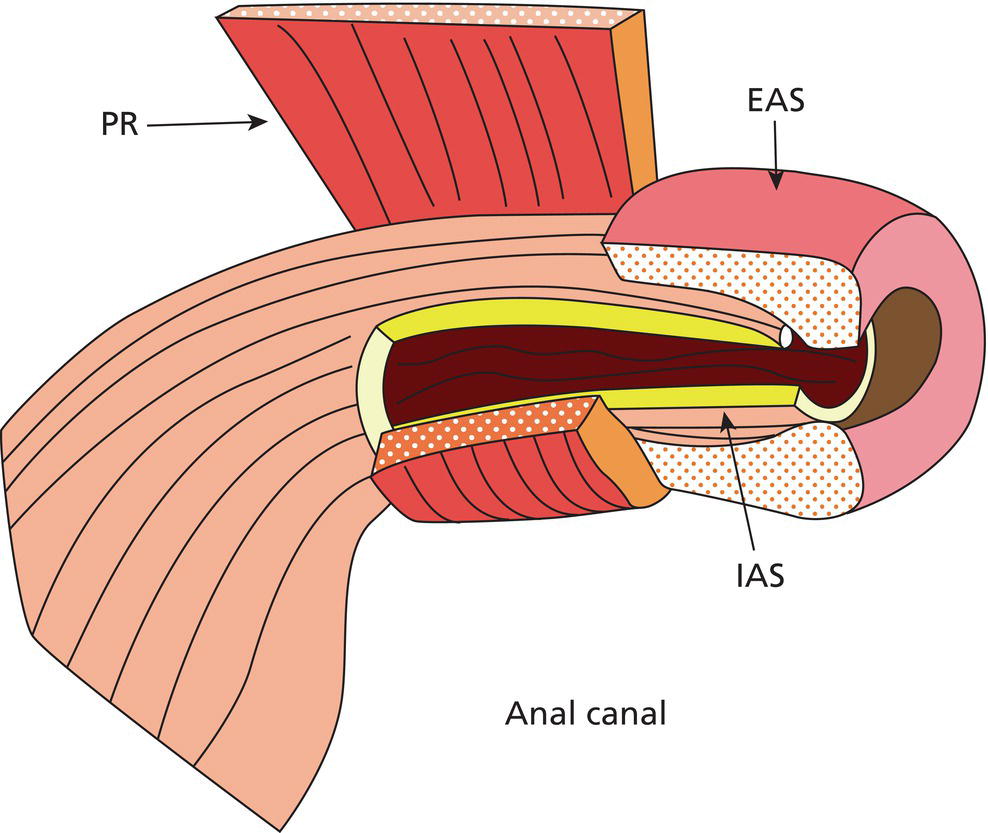
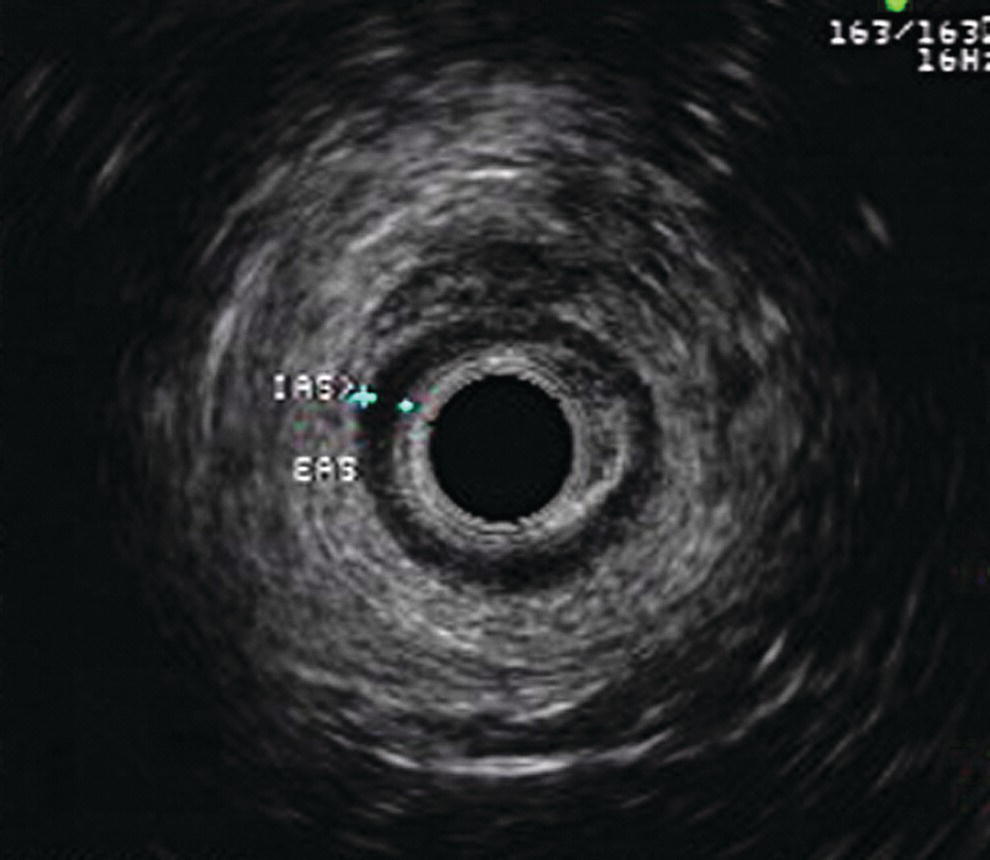
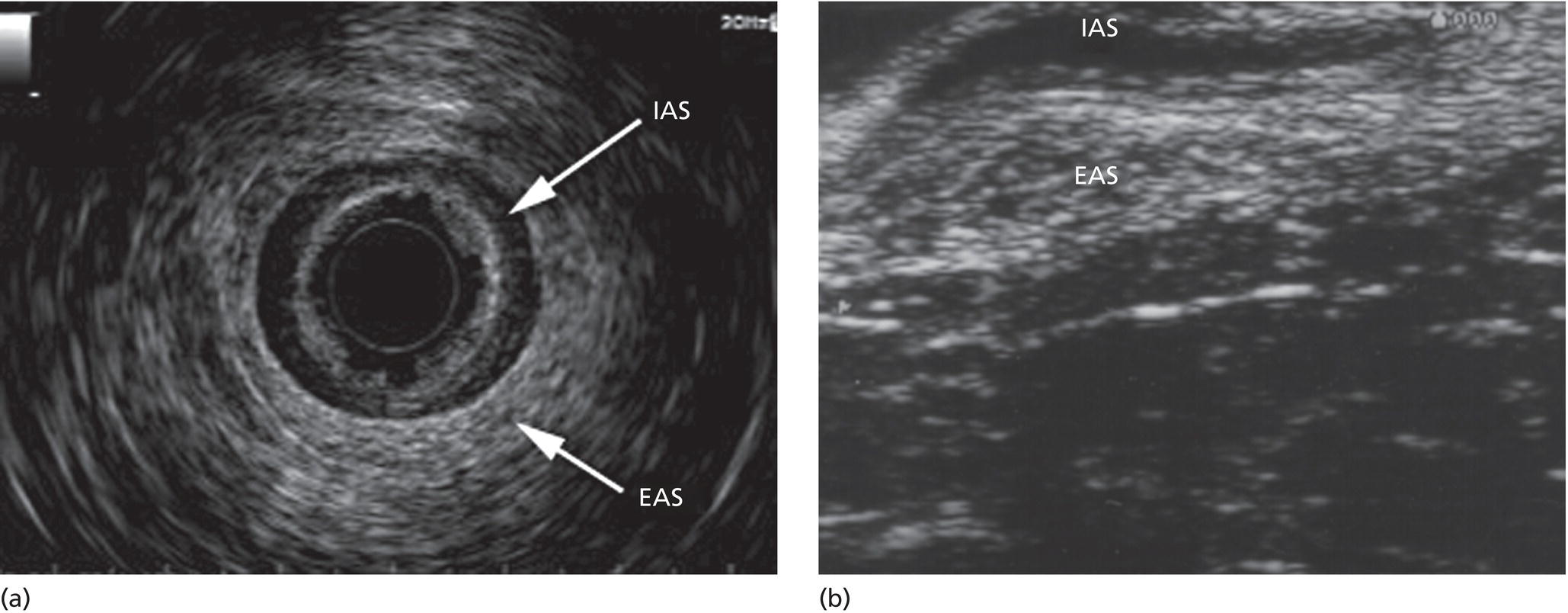
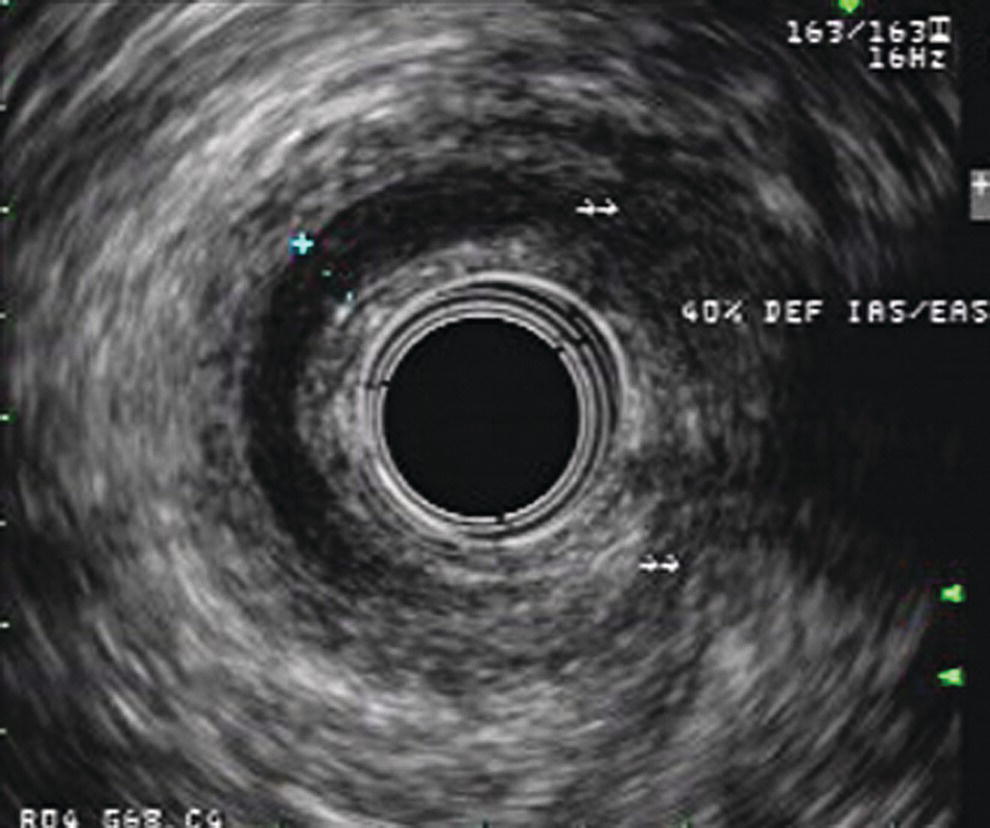
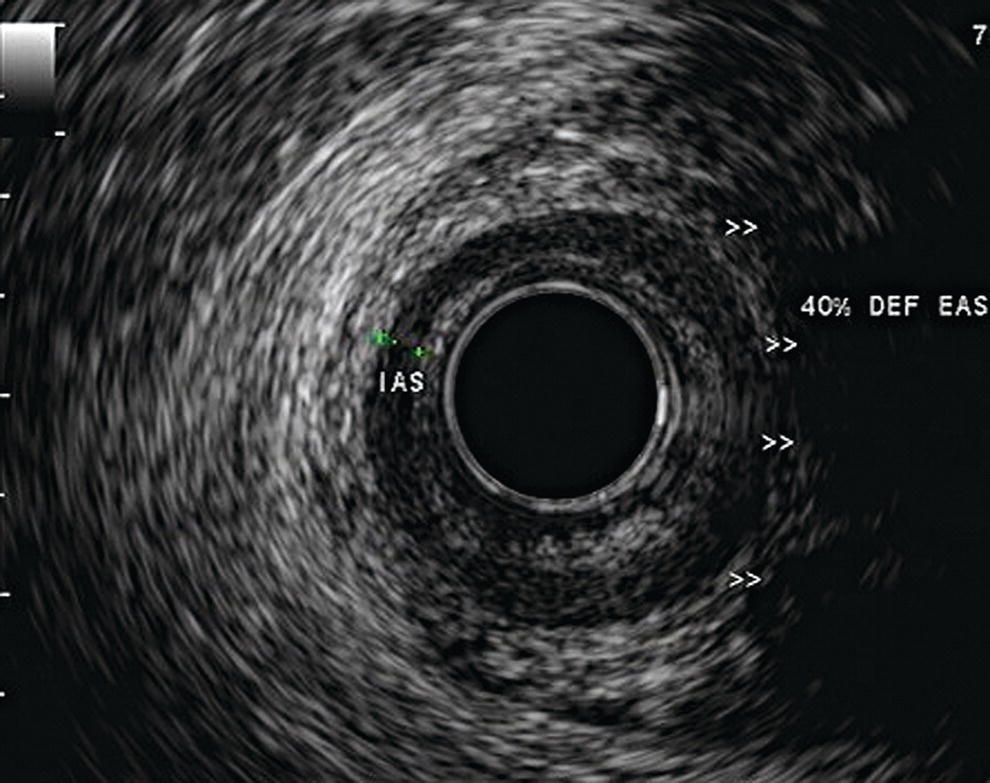
Transperineal ultrasound

Treatment
Perianal fistula
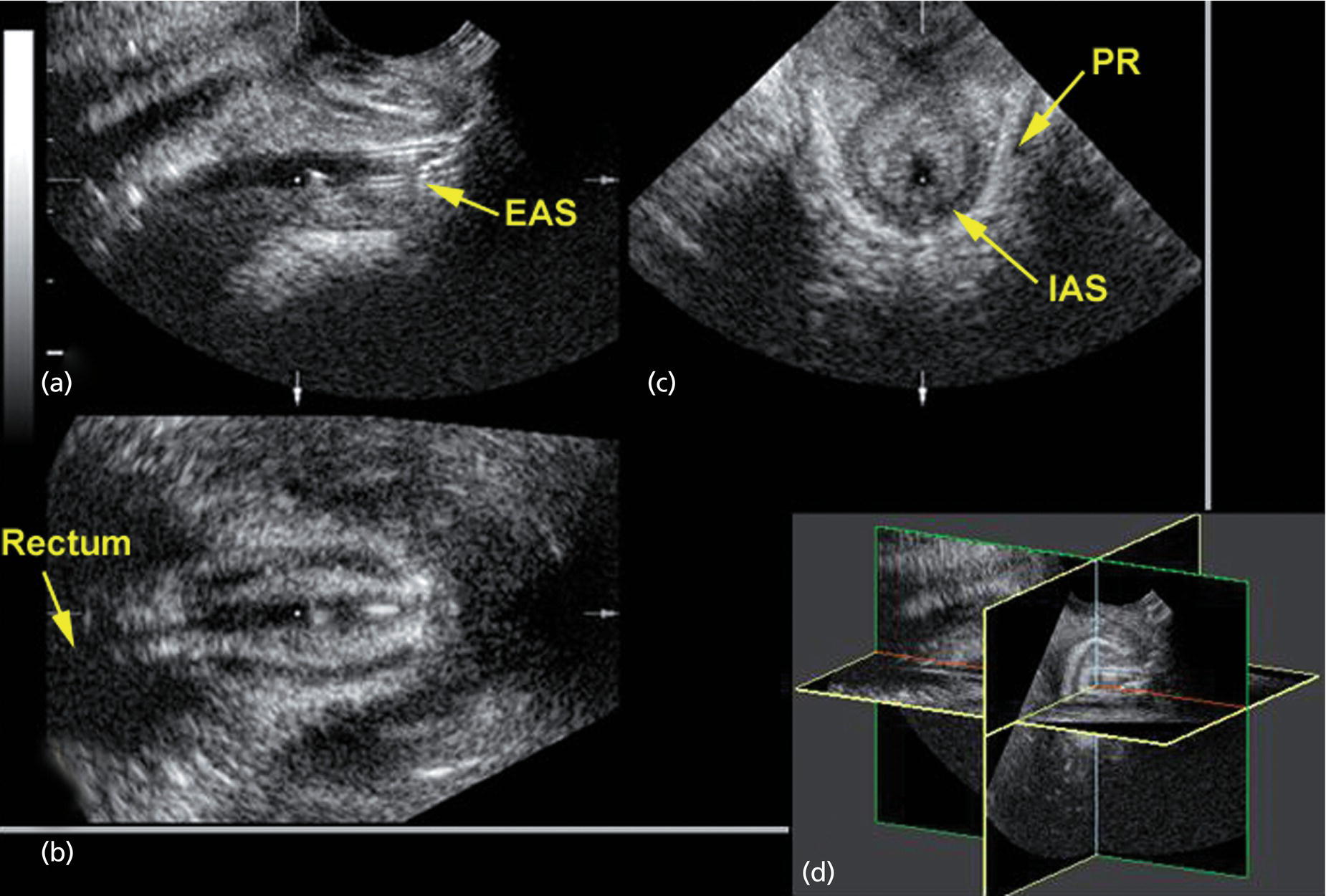
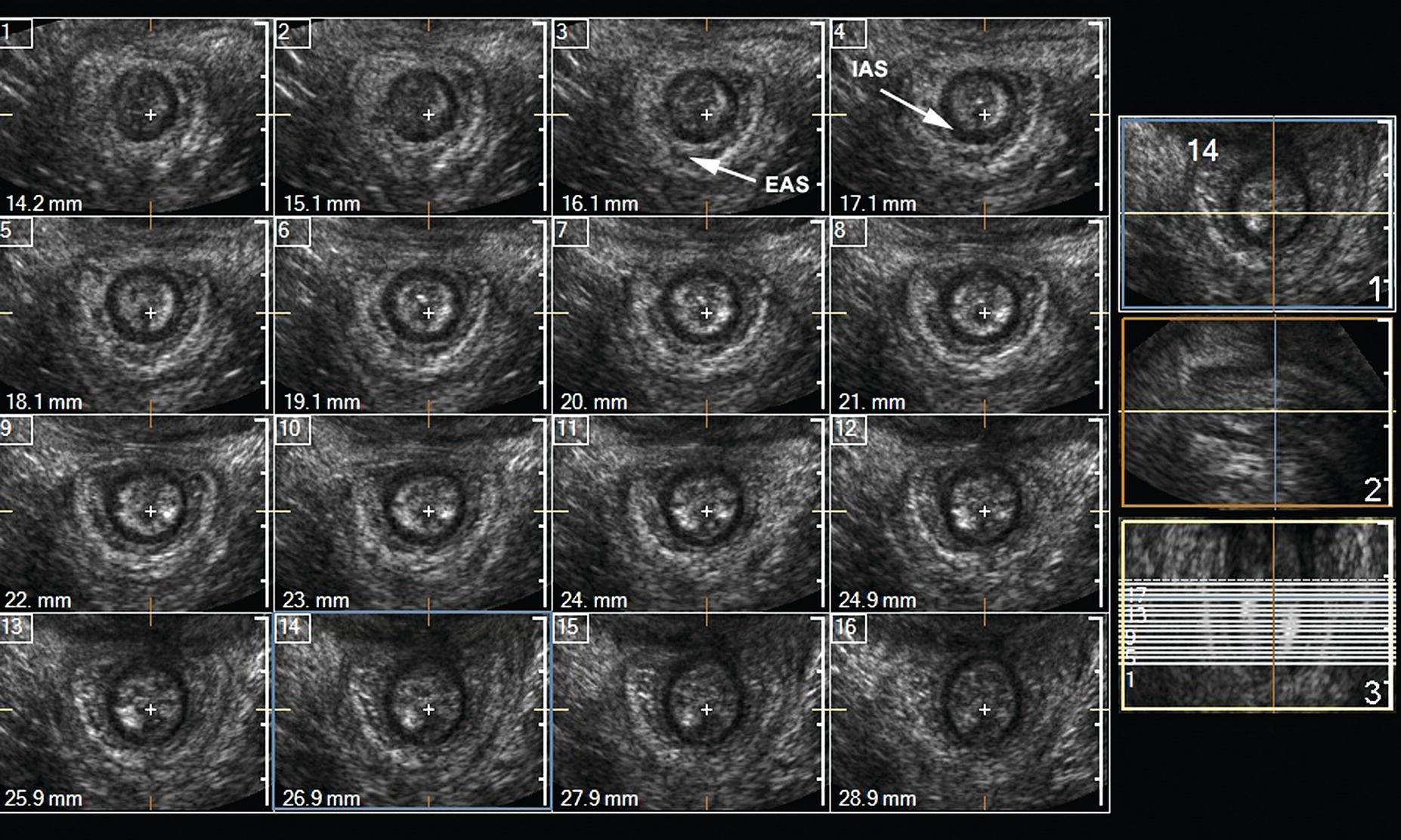
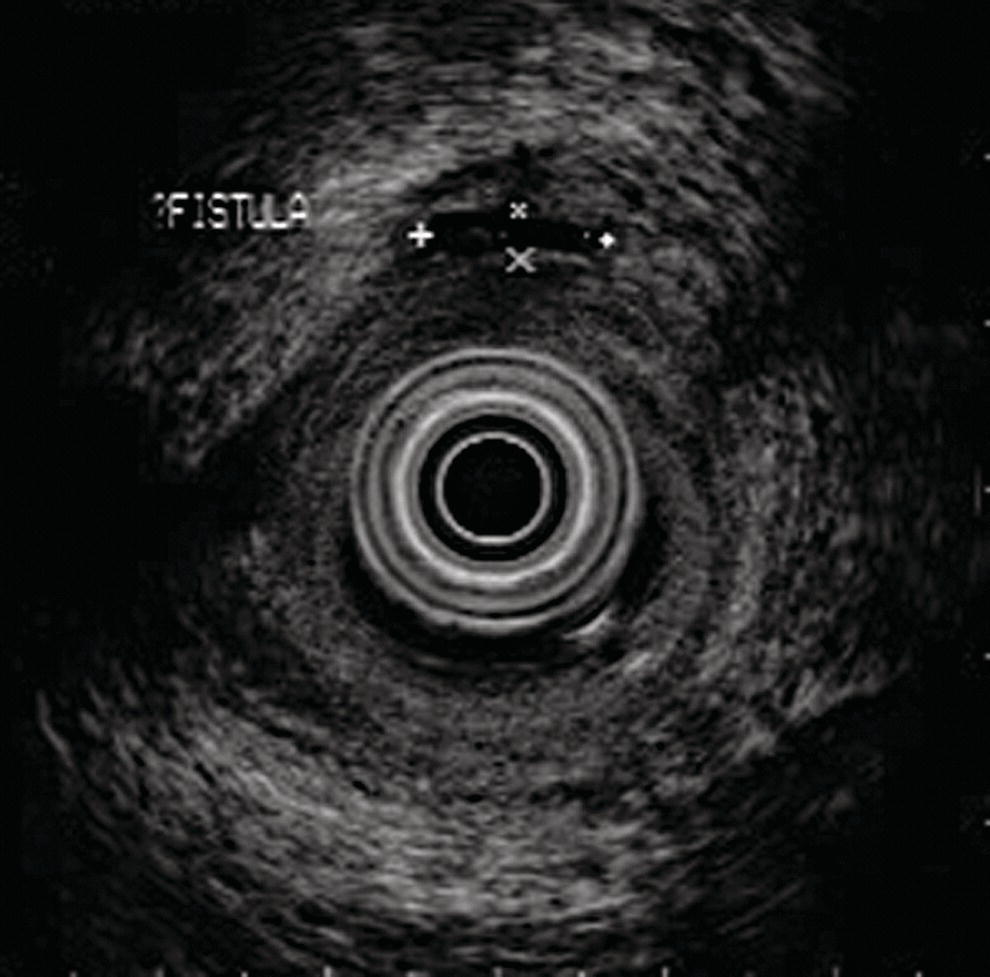
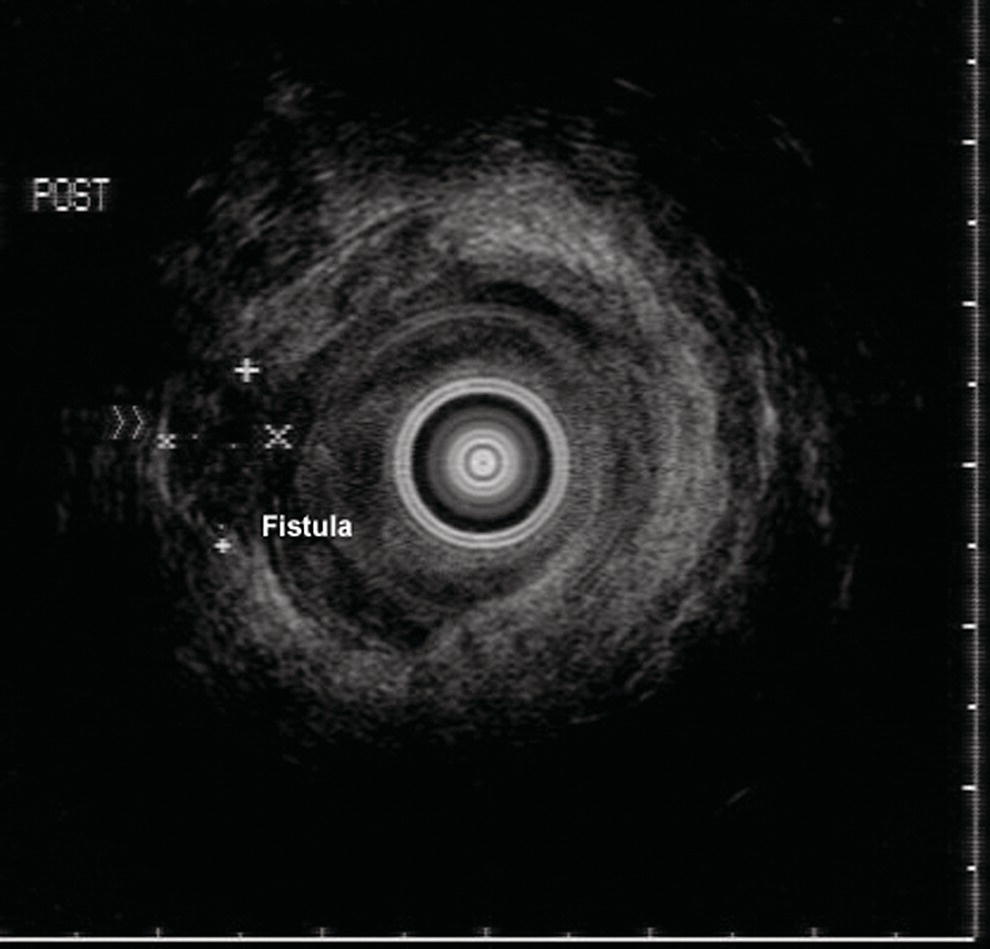
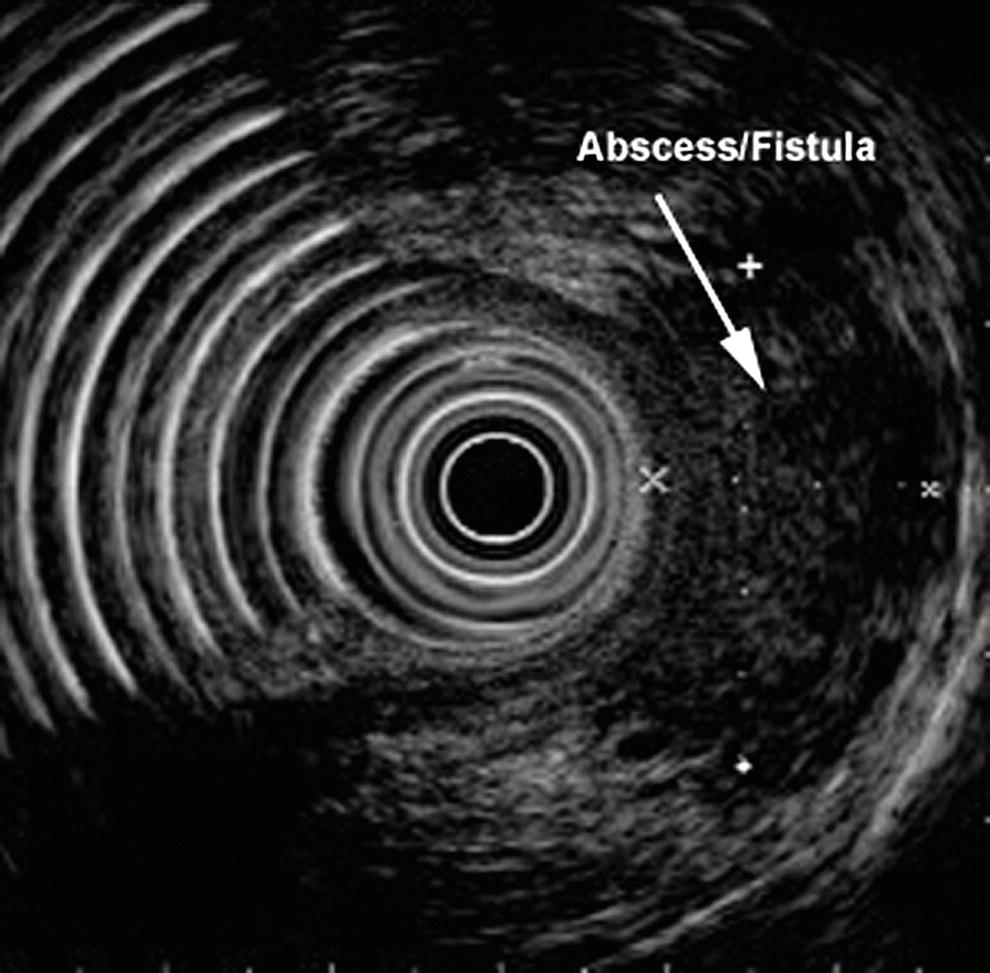
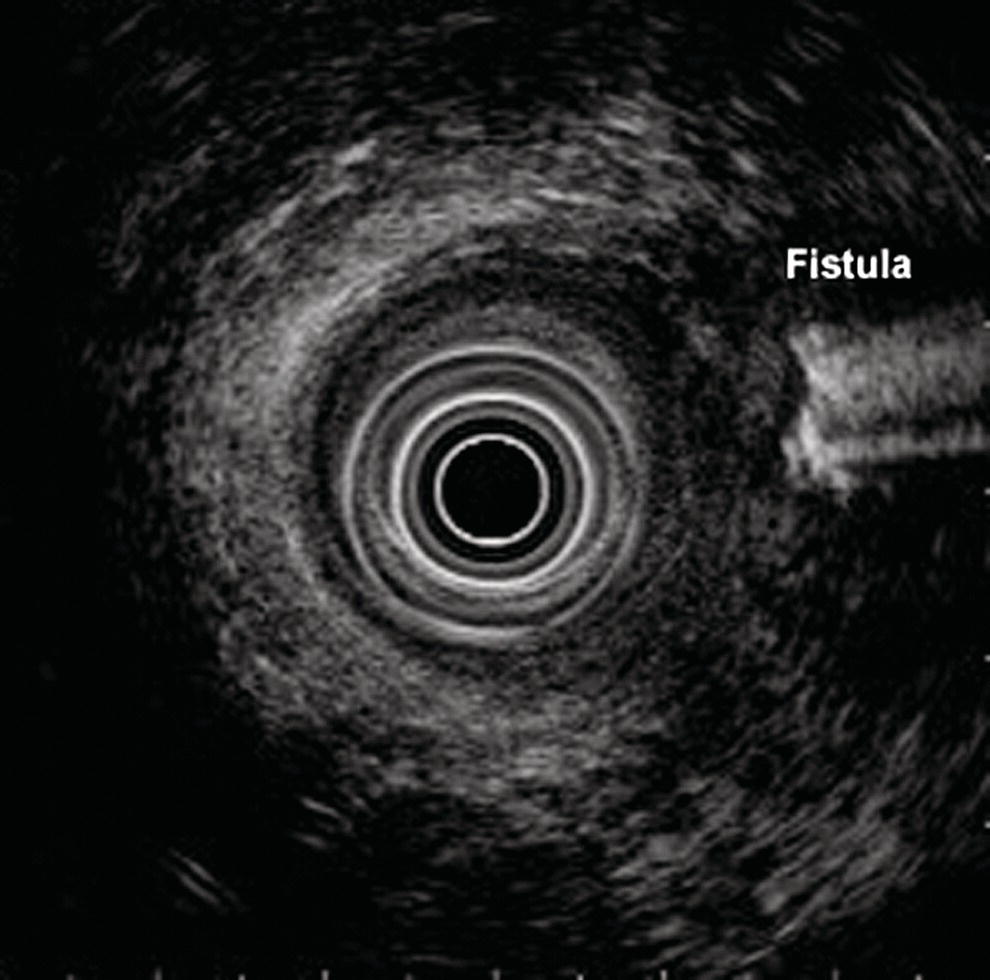
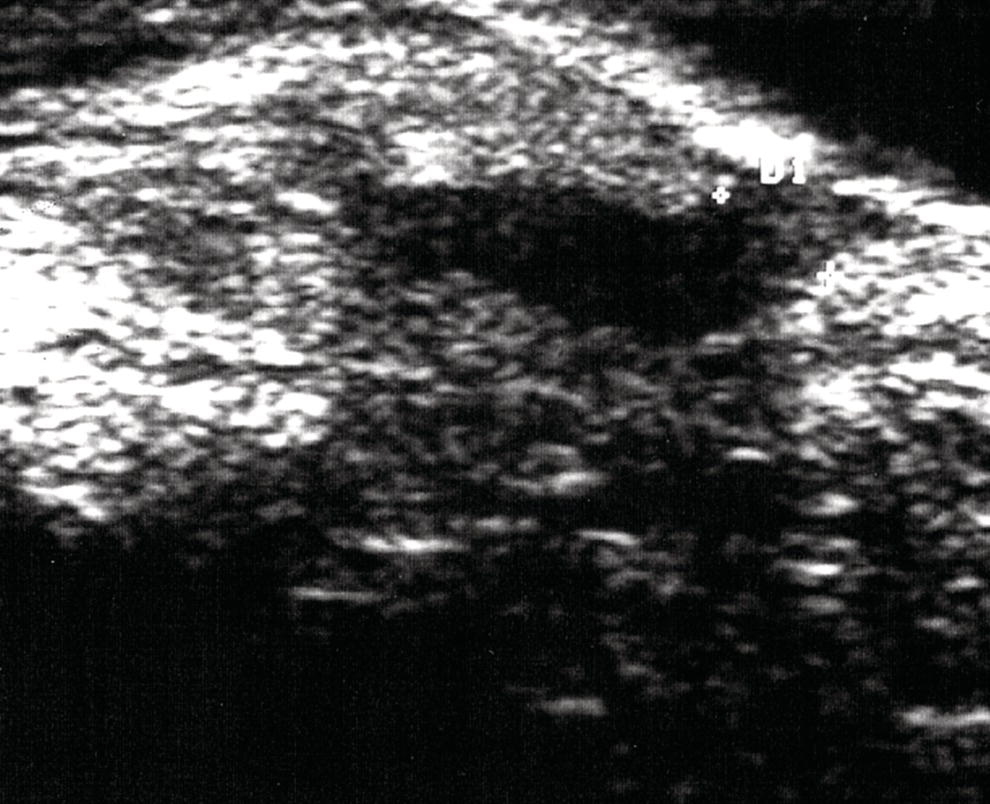
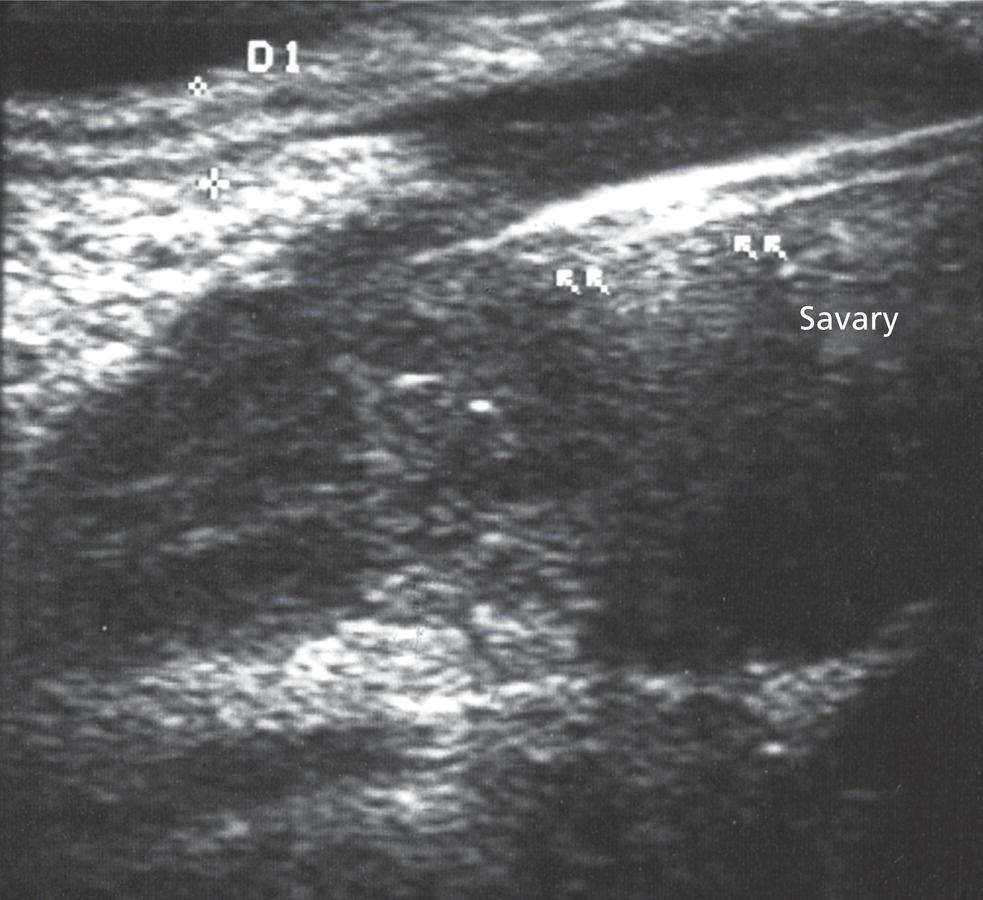
Stay updated, free articles. Join our Telegram channel

Full access? Get Clinical Tree


